Awesome. Stunning. Magnificent. The standard superlatives barely do justice to the Himalayas. The sheer scale is absolutely astounding. Think of this: in Nepal a mountain is classed as anything over 7,000m. Anything from 3,000m to 7,000m is considered a peak, and below that a hill. When you realise that in the UK a mountain is officially classed as anything over 600m, that the highest mountain in the UK is Ben Nevis at 1,345m, and that Nepal has eight of the world’s fourteen 8,000m and higher mountains, including Mount Everest, you realise just how immense the scale of the mountain range in this country is.
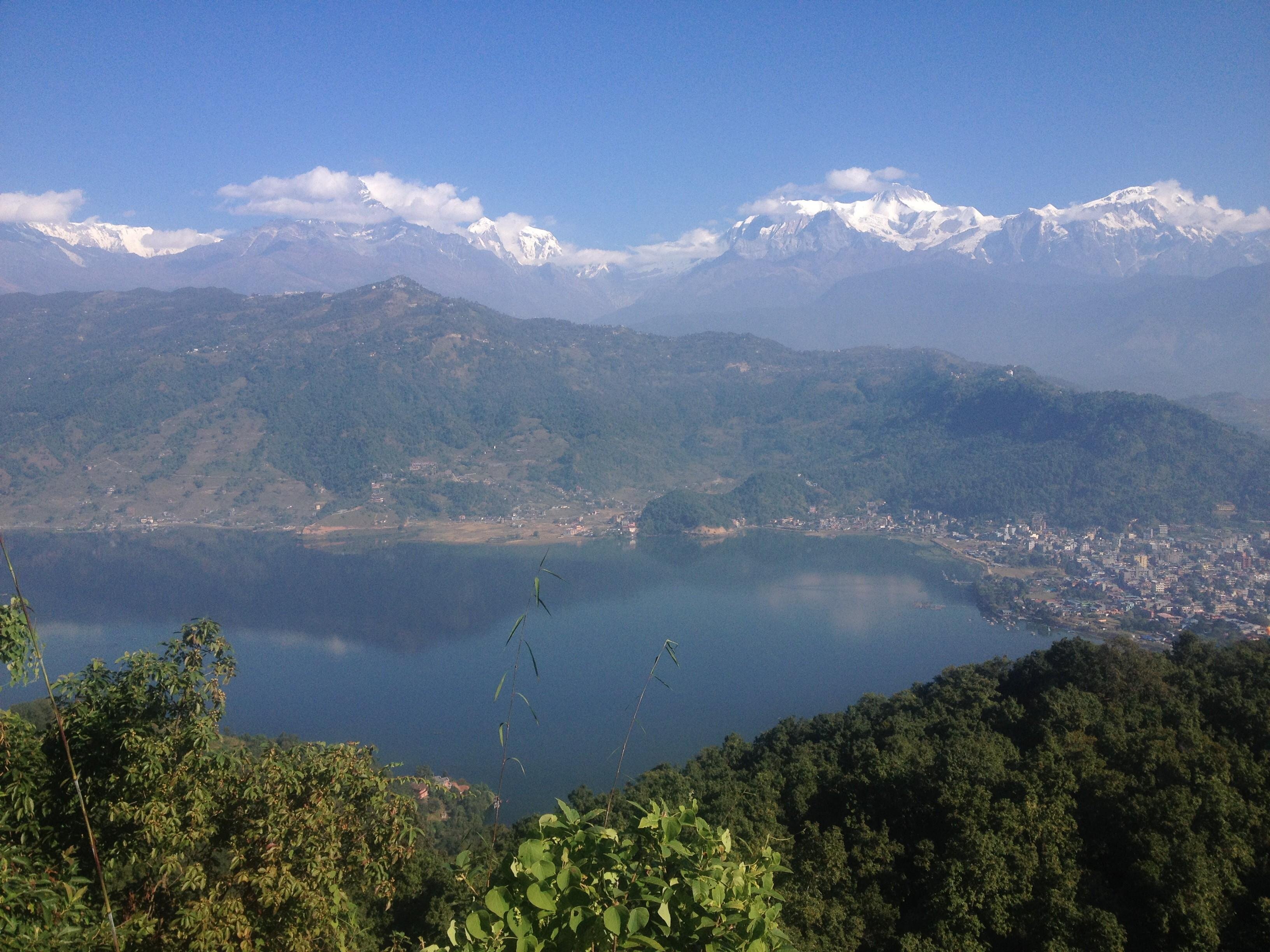
My friend and I are not particularly experienced hikers so we wanted a trek that was not too challenging but that still gave us a flavour of the Himalayas. We also wanted to avoid the more crowded routes around the Annapurna circuit. Our route took us on the opposite side of the valley to the Annapurna circuit giving us stunning views across to some of the main Himalayan mountains. Even though we climbed to a height of 2,500m, over 1,000m higher than the highest mountain in the UK, this was still only a tiny hill by Nepali standards. Crazy!
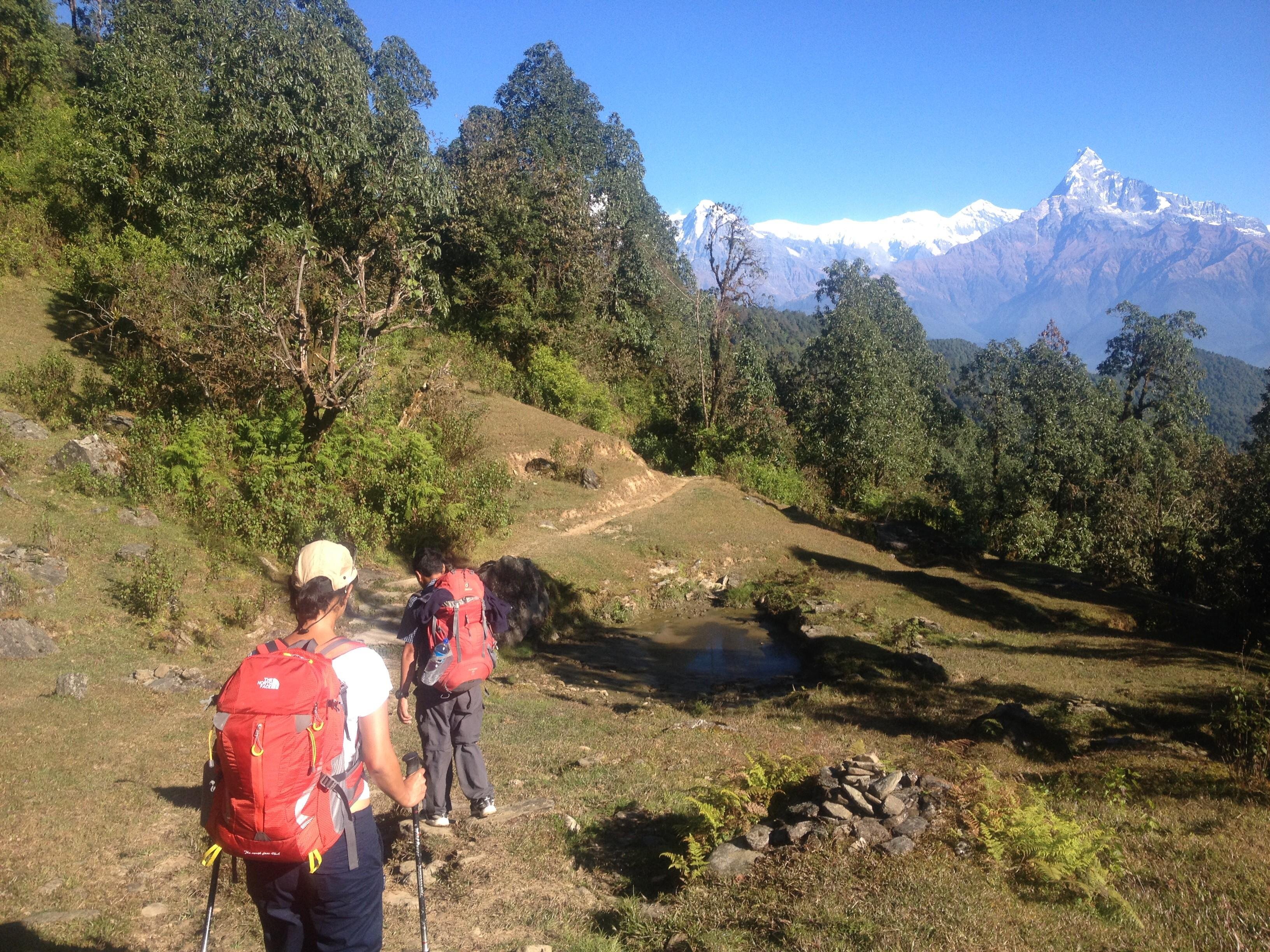
Our route began by Phewa Lake in Pokhara. From here we walked to Bhumdi the first night, onto Panchase the second night, and to Bhadaure for the final night. These were all tiny hamlets. The route took us through varied terrain, from wider tracks that led us upwards through tiny villages, to dense jungle, to open hillsides giving stunning panoramic vistas across the Himalayan mountain range.
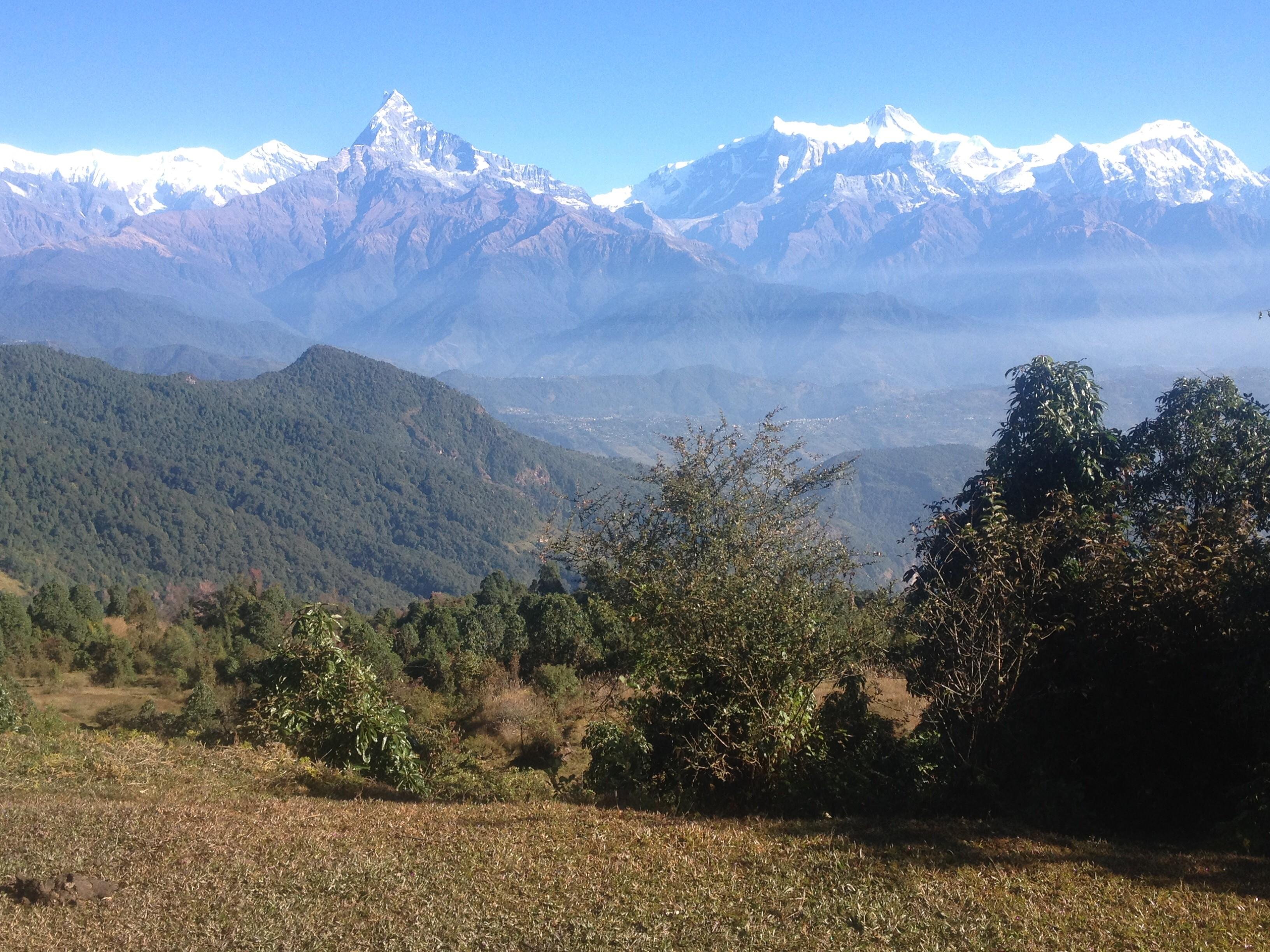
Accommodation was in ‘tea houses’, which are very simple shelters, sometimes in private houses, more often basic hostel type accommodation. The final night we were so excited to have hot water and a proper shower - the previous nights we had showered using a bucket of cold water. All the tea houses provided meals - without exception delicious food. I still dream of the amazingly creamy porridge I ate in Bhadaure.
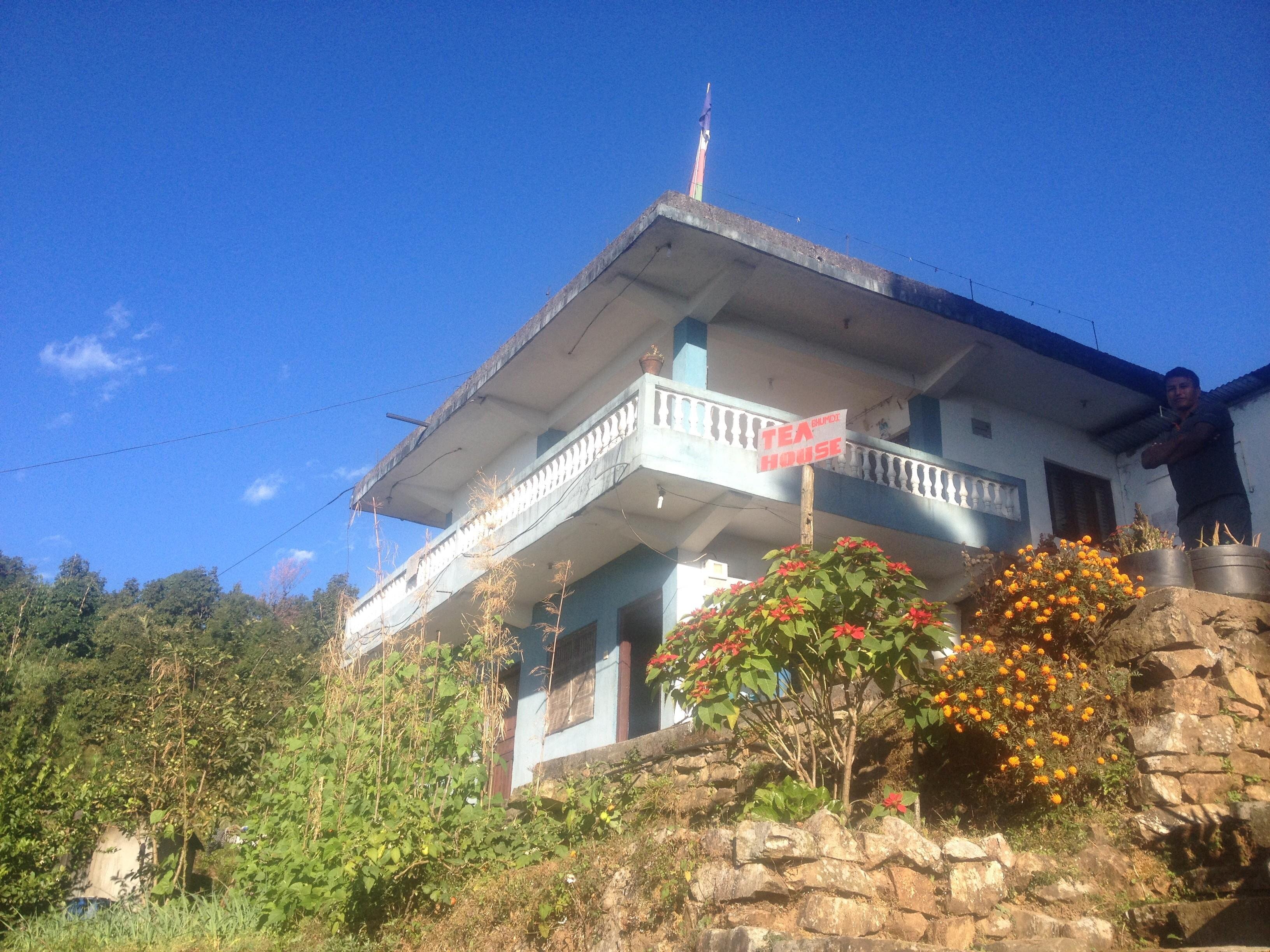
During the day we either took a picnic lunch or ate in small shacks we found along the way. Min, our guide, carried a stash of cheese, apples, bananas, oranges and nuts in his rucksack which he plied on us at every rest stop. The cheese was yak’s cheese, or more properly dri’s cheese as the female yak is known. You can’t imagine how good those apples and cheese tasted up there in the Himalayas, especially after a particularly steep part of the route.
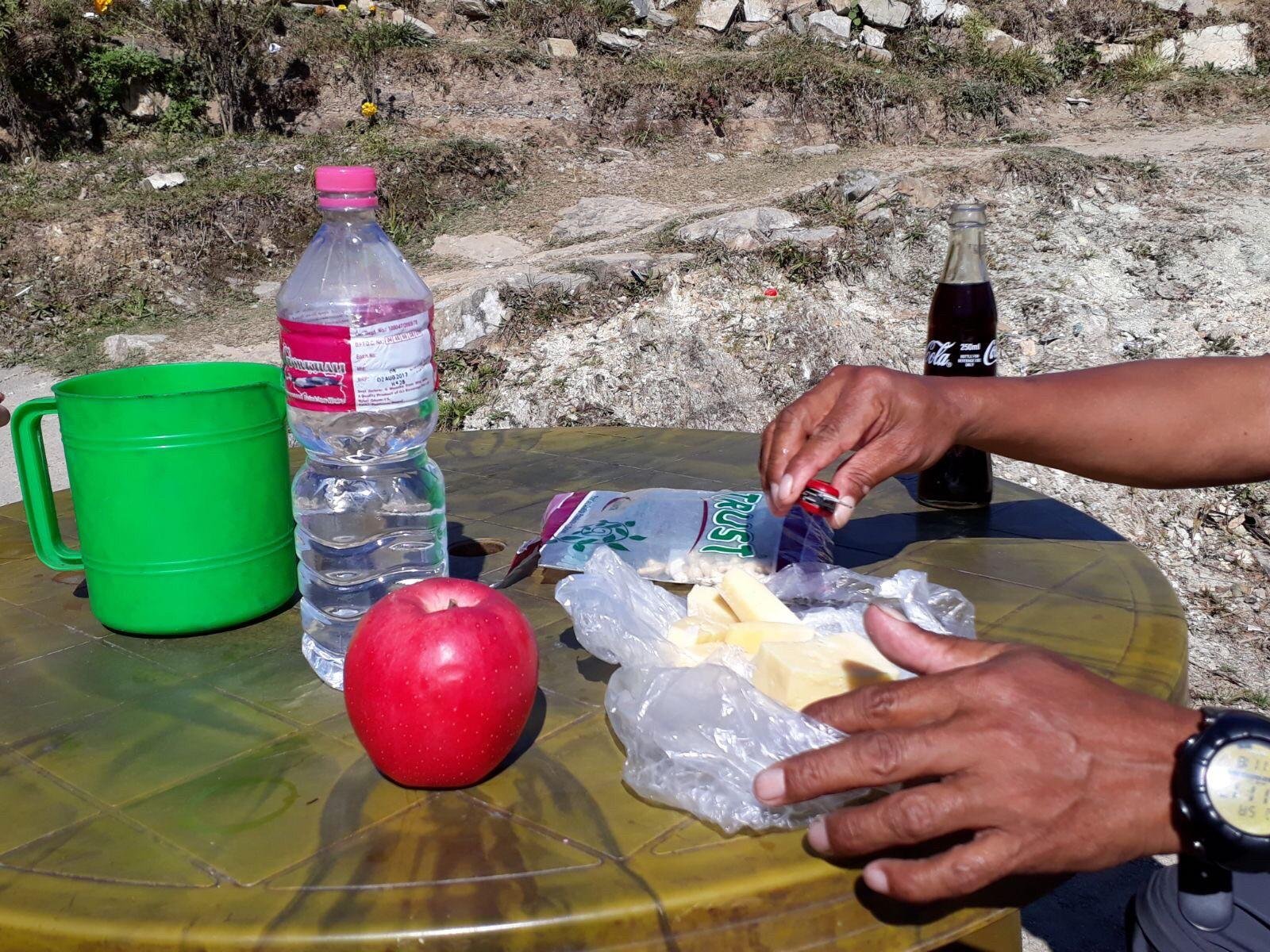
On the first day we walked through fields in which workers were harvesting millet. Min explained to us that millet could actually be turned into wine - and that this was one of the common local drinks, known as raksi. That evening in our tea house in Bhumdi we were informed that our hostess was actually in the process of brewing some raksi! We were able to see the process in operation in a small outhouse, and that evening, to accompany our chicken curry and daal, we sampled a glass of raksi. It was served hot, very welcome as despite the warmth of the daytime the moment the sun set the temperature dropped dramatically. It was great for a chilly evening, going down like a very smooth whiskey.
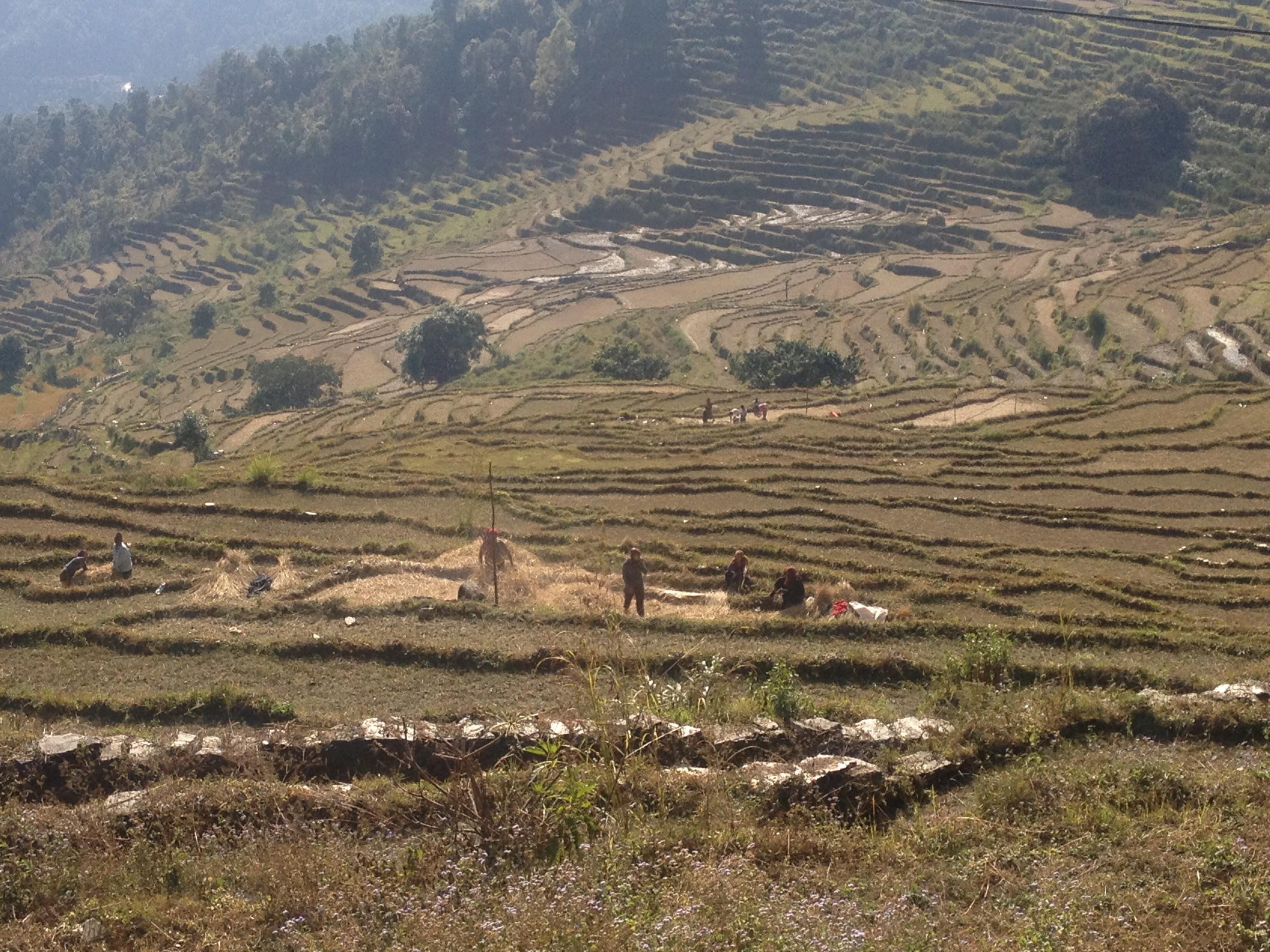
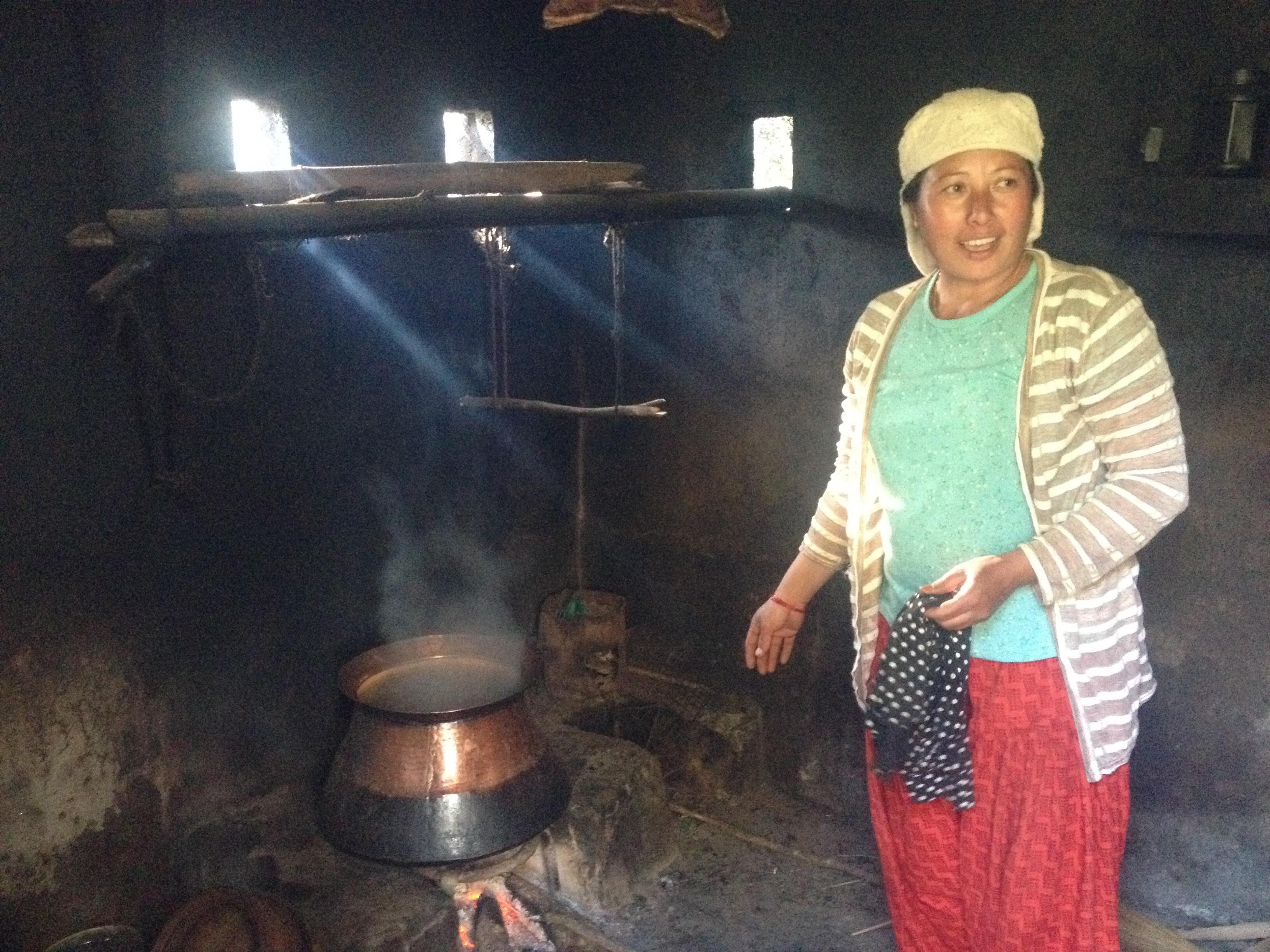
Waking along the trails we got other glimpses into life in this part of the world. One of my favourite scenes was of the children running down the mountainside, smartly dressed in their school uniform, hurrying on the way to class. Another sight that stuck in my mind was an elderly lady bent over beneath the huge pile of branches that she was carrying on her back.
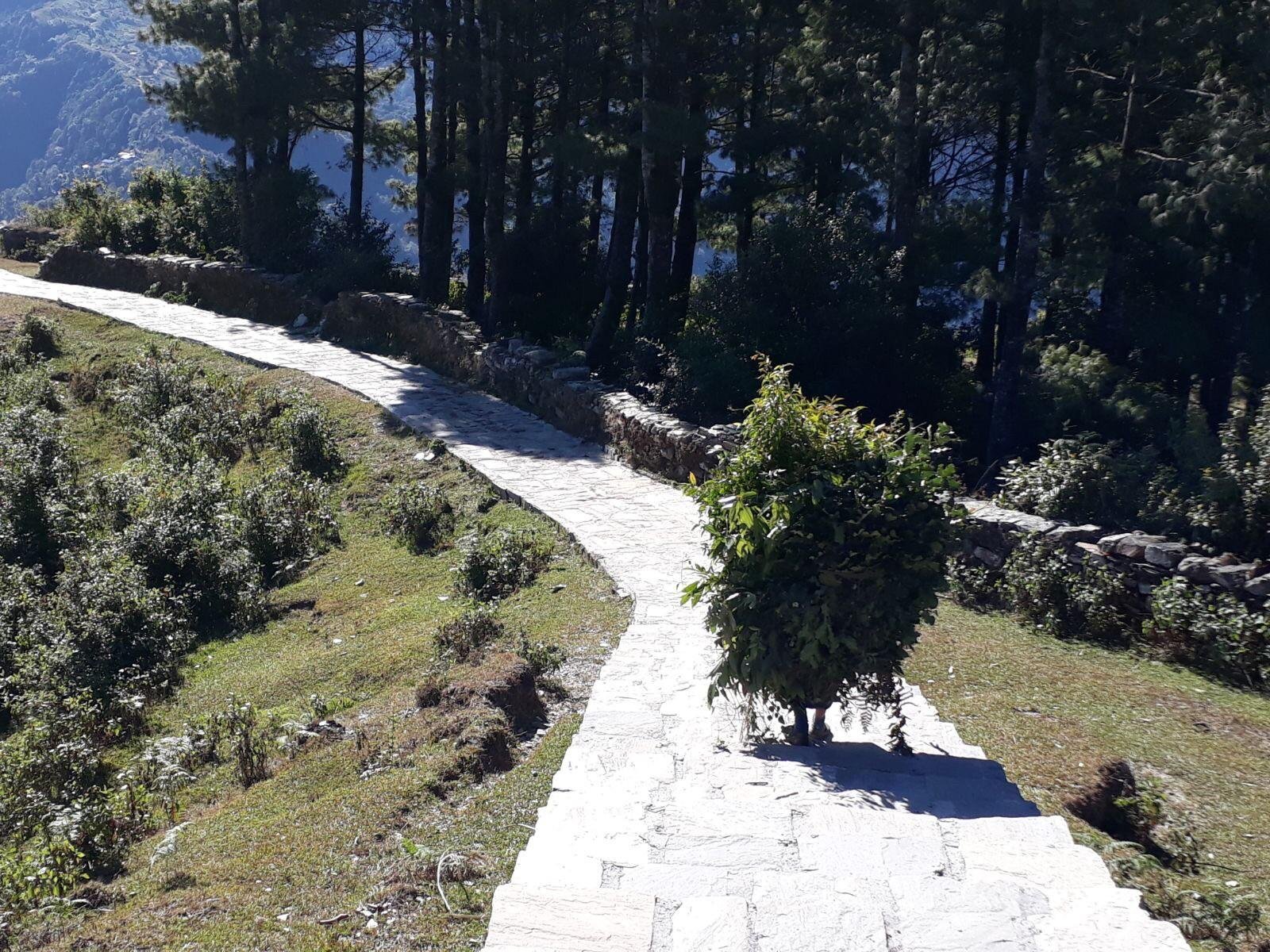
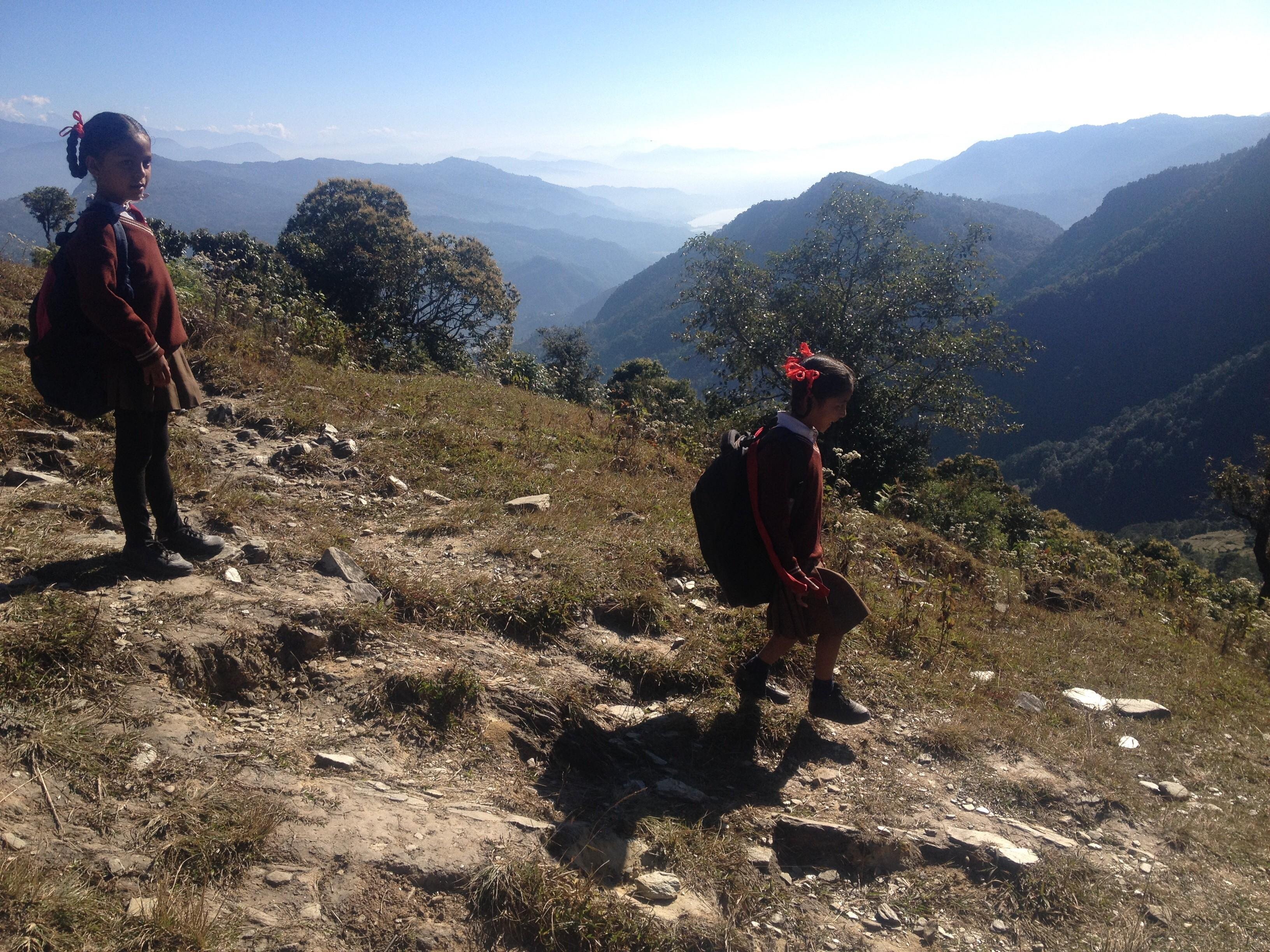
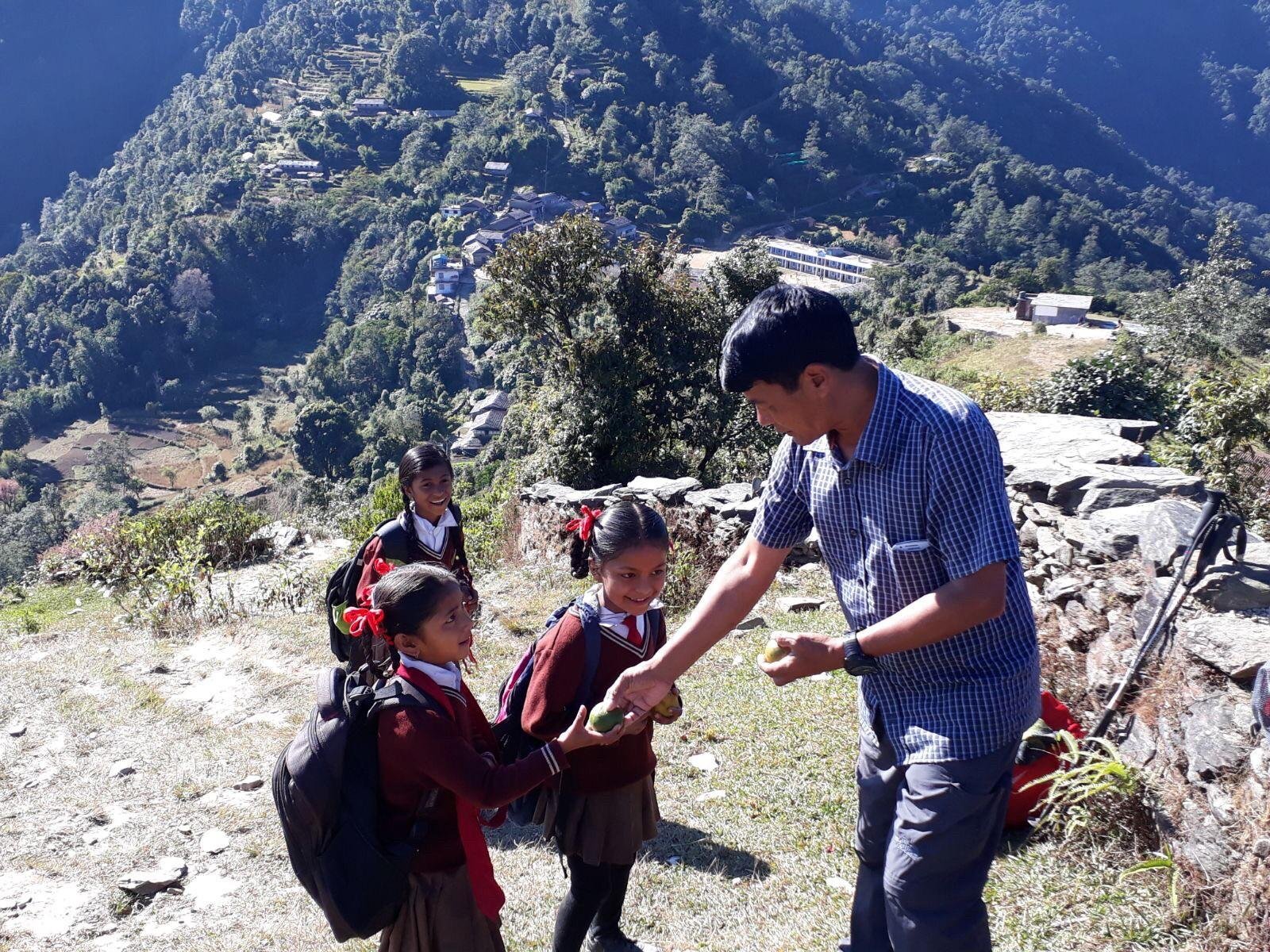
Our visit to Panchase coincided with a holy day for Nepalis. In the early hours of the morning, before the sun had risen and while we were sleeping, pilgrims started off from Bhumdi and other villages, on foot along the trail that we would follow a few hours later. In Panchase they would climb to a shrine on a nearby peak to pay homage to their ancestors and the mountain gods. As we arrived in Panchase that evening the pilgrims were beginning their long journey back. Sadly we heard that a bus, carrying elderly and infirm pilgrims who could not make the journey on foot, crashed off the mountainside on the way back, killing several passengers.
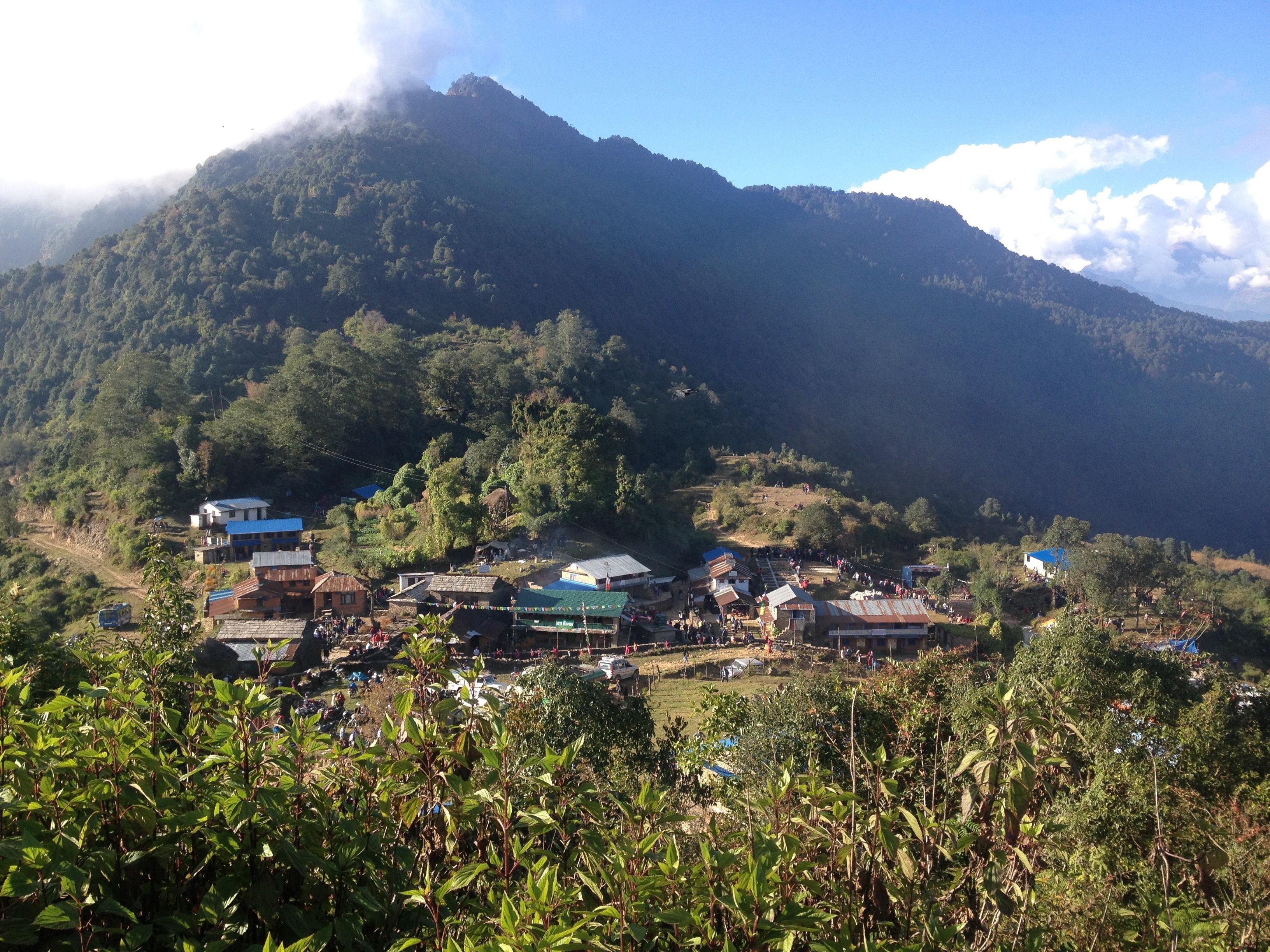
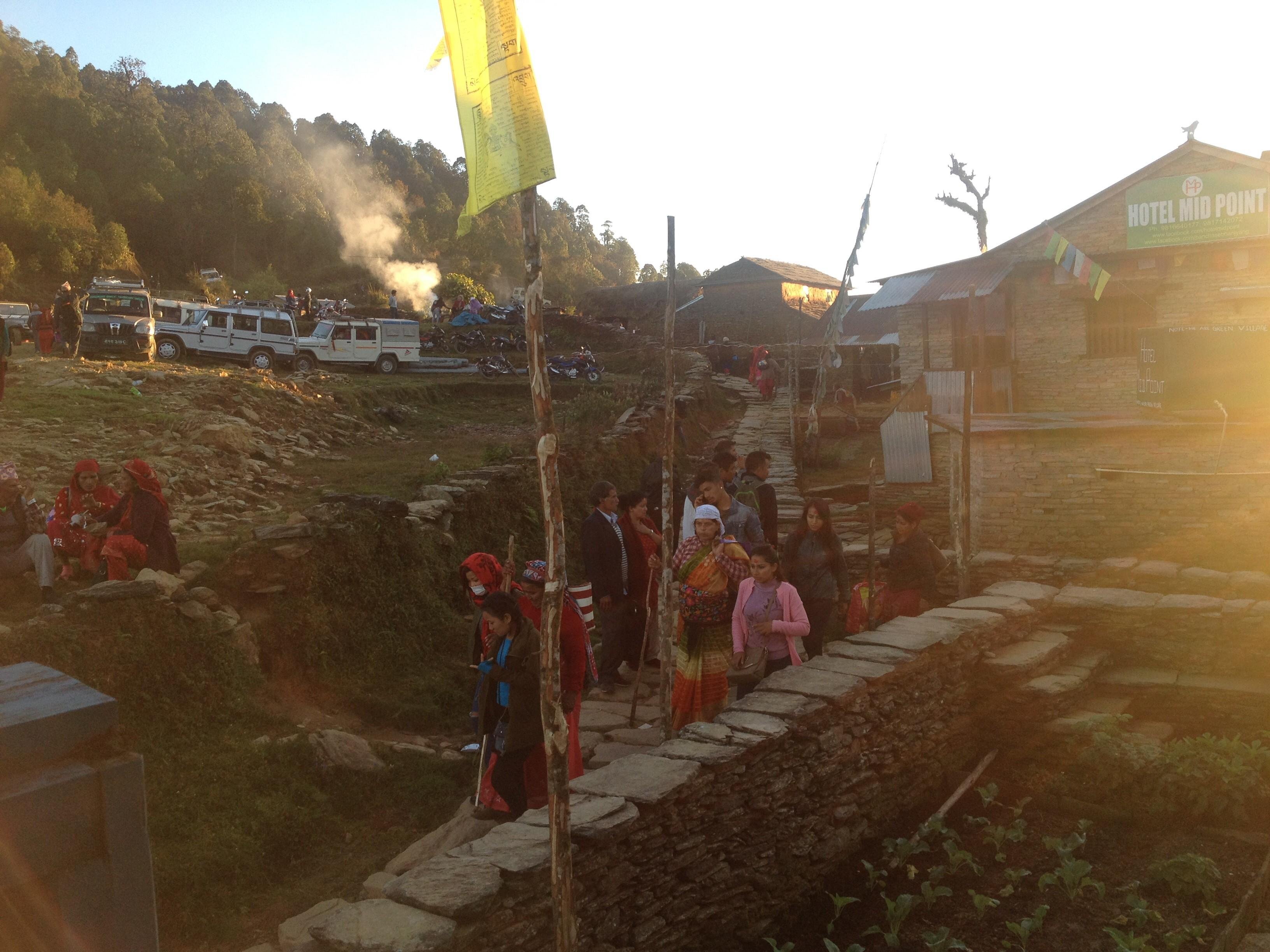
From time to time during the trek the peace and quiet would be disturbed by loudspeakers blasting music from jeeps, followed by long speeches. It turned out that we had arrived in the area two weeks before the first parliamentary elections in Nepal for 18 years. The last parliamentary elections took place in the midst of the 10 year civil war between the monarchists and the Maoist rebels. So this was an especially momentous period for Nepal with hopes high that these elections would herald political stability after years of instability.
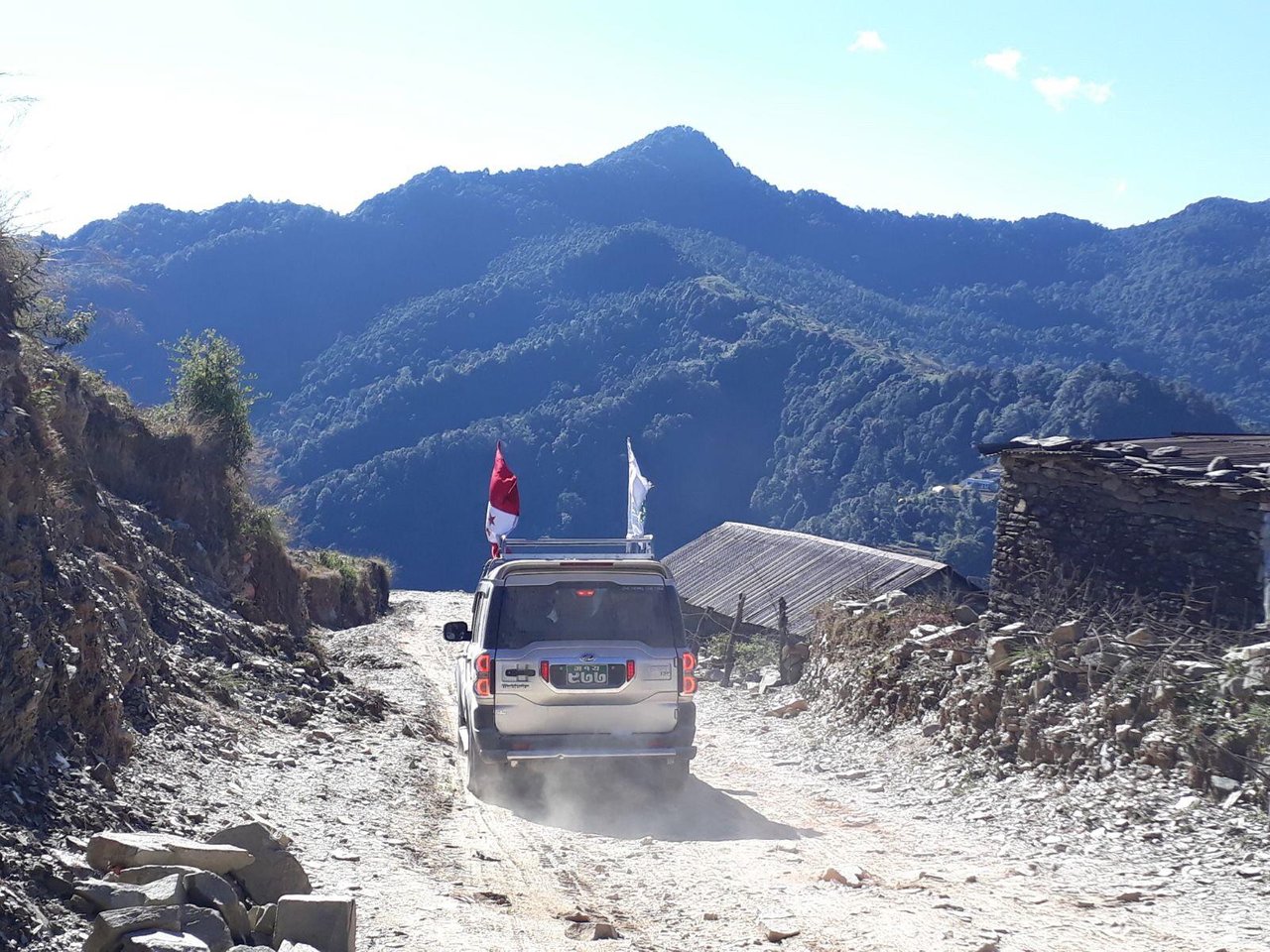
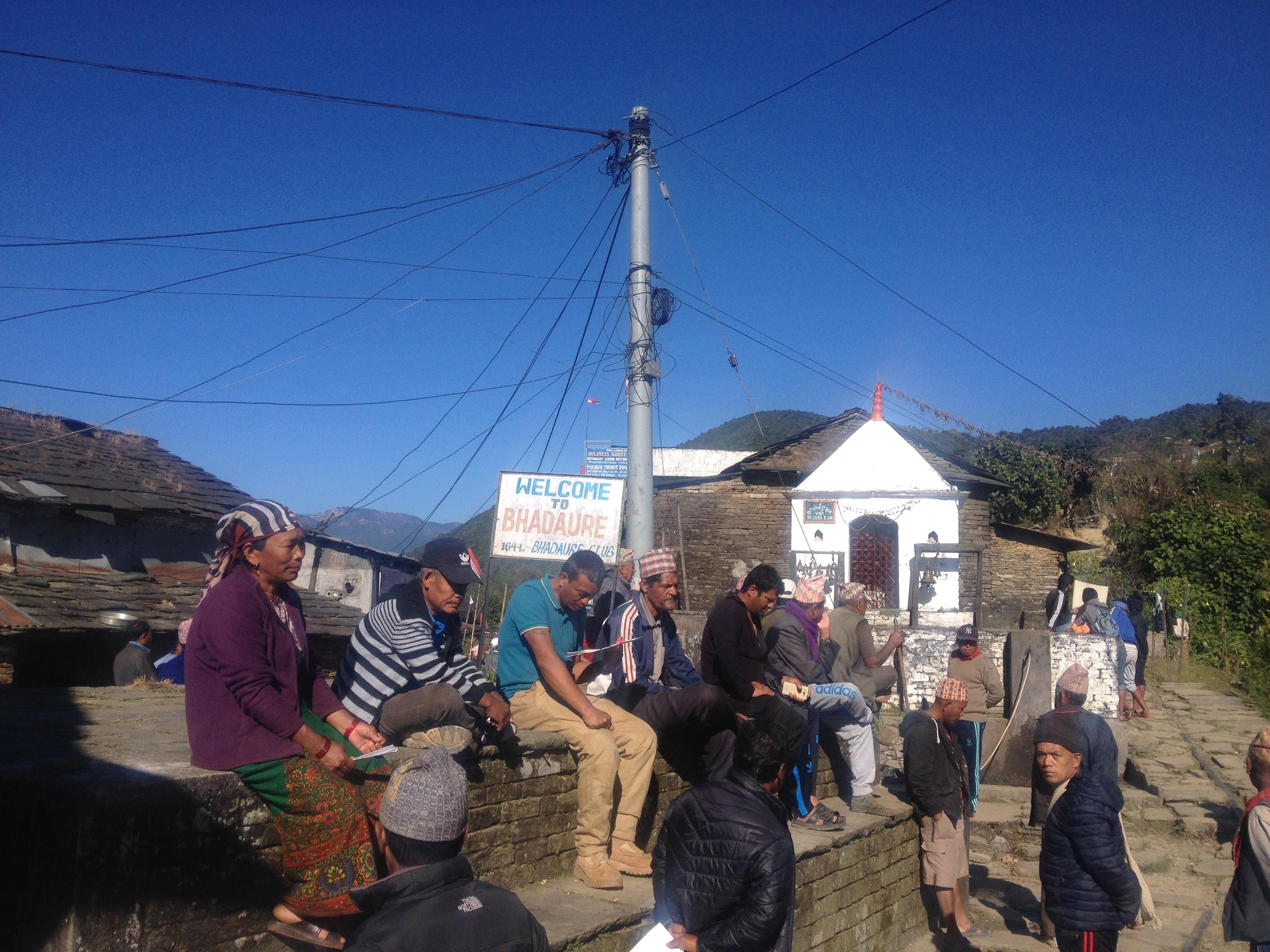
One morning sitting out on the terrace of our tea house as the sun rose I heard shouting coming from one of the slopes opposite. I thought this was also connected to the elections and asked Min if this was so. What he told me astounded me. He said that this person calling out across the hillsides was actually relaying the day’s news to the inhabitants. As the villages are so isolated, with no internet, many with no electricity, and no easy access to newspapers, the villagers relied on this system similar to town criers in Europe the Middle Ages to catch up on what was going on in the outside world. How amazing!
This trek opened up a whole different world to us. It was a privilege to be able to get these glimpses into a particular way of life. The people we met were unfailingly welcoming and friendly. Above all we are grateful to our guide Min for sharing his food, and his insights into this very different way of life.
All photos by freewheel
See my first post on our trip to Nepal here
